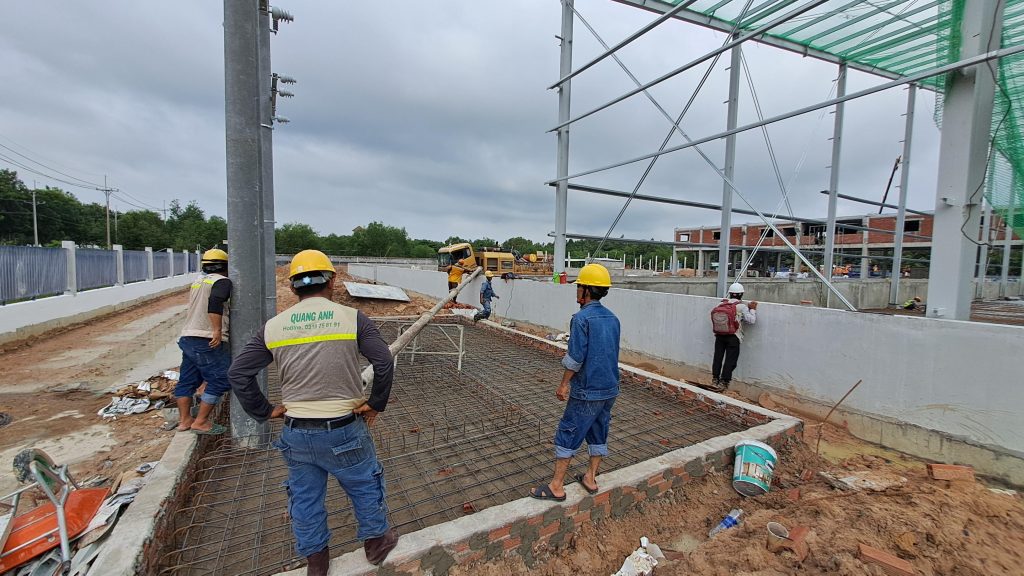News
Transformer Repair in Long An: Medium Voltage Electrical System and Safety Solutions
The medium voltage electrical system, substations, MEP, and solar power ensure efficient and safe electricity supply and distribution for factories/industrial parks, especially in southern Vietnam.
Definition and Context of Medium Voltage Electrical Systems
The medium voltage electrical system, substations, MEP, and solar power are vital components in technical infrastructure, ensuring safe and efficient energy supply, distribution, and usage for factories and industrial parks. Rooftop solar power also incorporates renewable energy, meeting operational, safety, and legal requirements when connecting to the national grid.
The medium voltage electrical system plays a crucial role in distributing electricity between high voltage and low voltage systems, typically operating at voltage levels from 1 kV to 35 kV, most commonly between 15 kV and 33 kV. In some areas, this system can reach up to 220 kV depending on larger scale needs. The primary purpose of the medium voltage system is to transmit power from the power plant or medium voltage substation to the low voltage substation. This is a significant bridge between the supply source and the end users.
The context of using medium voltage systems mainly hinges on the intermediary phase of the electricity network, functioning between high voltage and low voltage levels. During this process, the system uses concrete centrifugal poles ranging from 9 to 12 meters high. The wires are typically covered or bare, tightly attached to chain or standing insulators. To ensure electrical safety, wires and devices must be thoroughly insulated, with a standard height from the ground usually exceeding 9 meters.
The structure of the medium voltage electrical system usually includes crucial components such as substations, medium voltage cabinets, insulated wires, and protection systems along with switchgear. Medium voltage substations help step down voltages to suitable levels for power distribution to end users. Medium voltage cabinets are considered the control center of the system, integrating protection and switchgear to ensure stable and safe operations.
In summary, the medium voltage electrical system is indispensable for effective and safe electricity distribution from generating sources to final use points, while also supporting enhanced transmission efficiency within the network. The insulation of devices and wires, combined with adherence to electrical safety standards, are key factors for optimal system functioning.
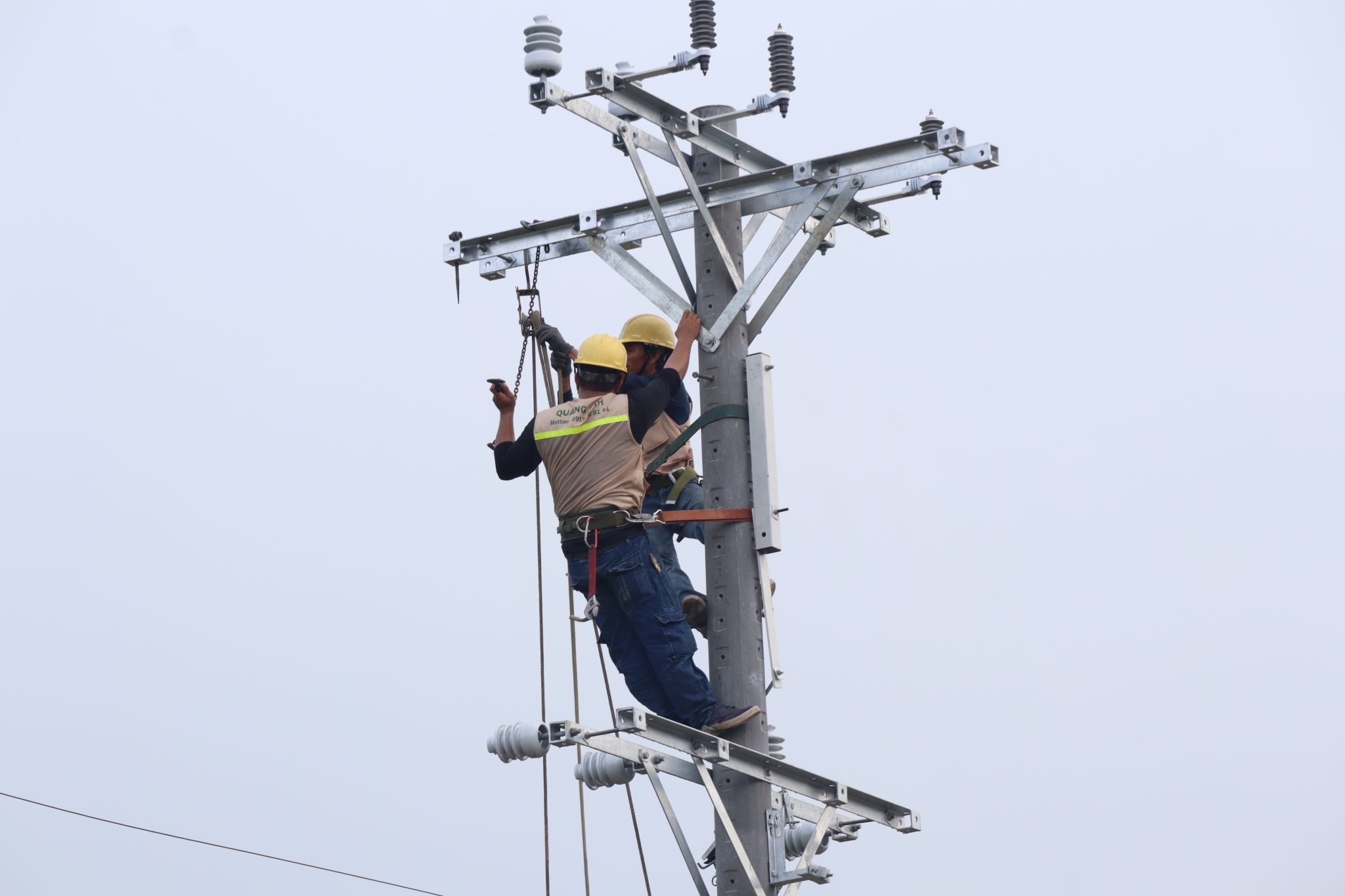
Legal Process and Connection with EVN
The investor prepares a connection application dossier to EVN, the power unit surveys and agrees on a connection with technical standards. After installing devices and testing according to standards, functional testing and electrical safety inspections occur before signing a power purchase agreement.
Application Process and Connection Agreement
- The customer submits a power connection application dossier to EVN at the local Electricity Company (CTDL) or Power Corporation (TCDL). The power unit will then receive and schedule a survey, agreeing on the connection point location and necessary technical requirements.
- Before or during this process, the customer needs to complete solar power legal procedures or align with the electricity planning approved by competent authorities.
Project Implementation and Preparation for Electrification
- After agreeing on technical specifications, the customer signs an investment contract with Electricity.
- The customer must work with state agencies to negotiate power line routes, establish an investment project, technical design, and environmental protection; carry out land clearance, obtain permits if needed, purchase materials, and organize construction work.
- At least 7 days before the connection, the customer sends the electrical condition dossier to Electricity.
Acceptance Testing, Contract Signing, and Connection
- After the project is completed, the customer coordinates with Electricity for electrical project acceptance testing. If standards are met, Electricity will install measurement meters and sign a power purchase agreement.
- For solar power projects, a request to sell electricity is necessary for Electricity to survey and agree on installing dual measurement meters in accordance with technical standards.
- For large power plants, a testing and acceptance process is required for COD recognition, sending a testing plan to the scheduling department along with the Power Trading Company before the COD test date.
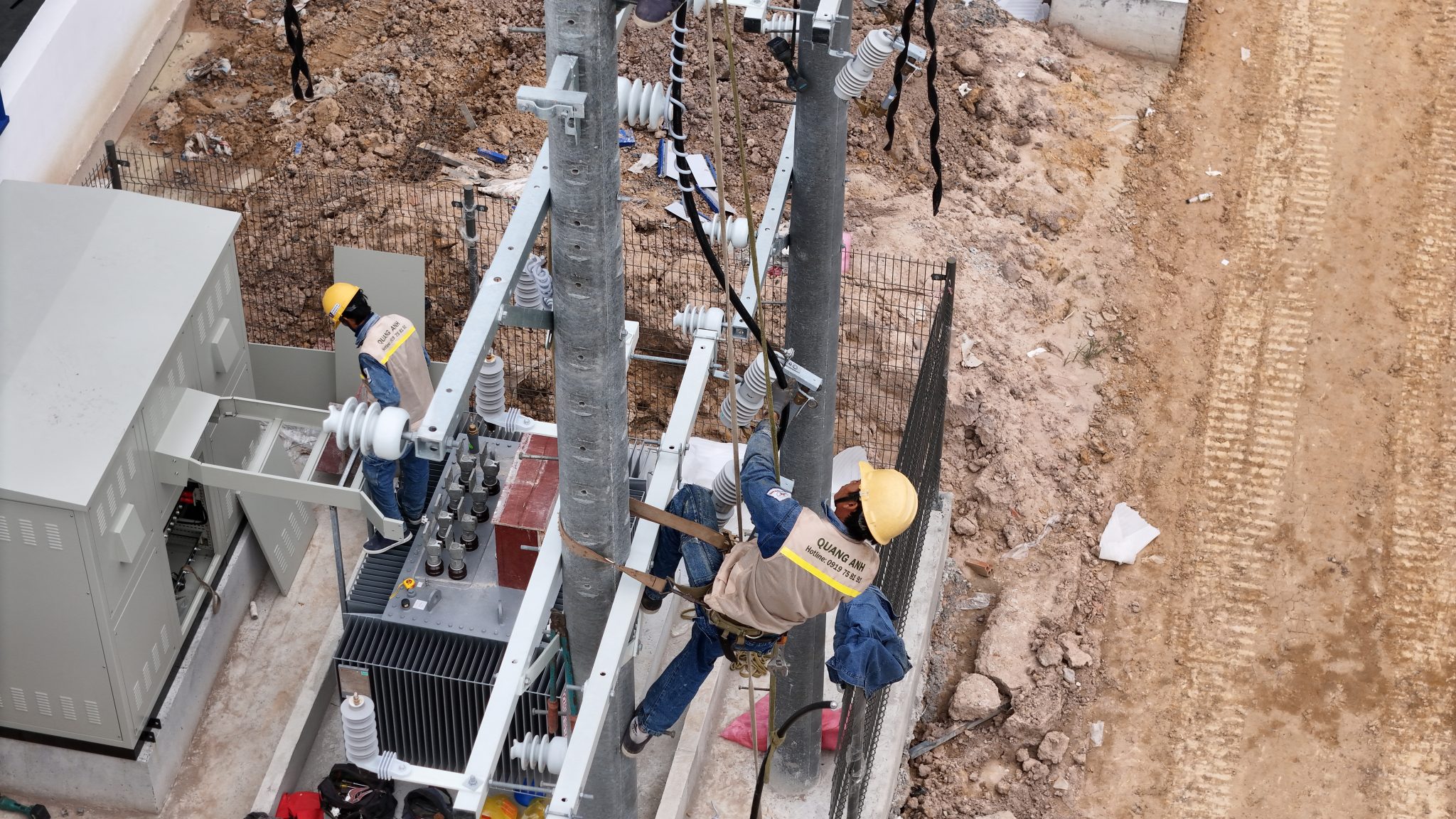
Common Risks and Prevention Methods in Electrical Systems
Technical risks such as incorrect equipment selection, improper installation can cause safety issues. Avoidance includes using standard equipment, adhering to testing procedures, and valid connection agreements. Ensure full legal and technical dossiers to avoid legal risks.
In both industrial and residential electrical systems, identifying and preventing electrical system risks is crucial. Common issues include:
- Phase Loss: Phase loss is a voltage loss phenomenon occurring in one or all three phases of the system, leading to voltage imbalance. If not addressed promptly, phase loss can result in electric shock risk, equipment damage, system overload, and overall performance decline.
- Electrical Short and Explosion: These incidents often arise from poor technical connections, unsynchronized equipment, or overload. Electrical shorts can increase temperature, causing explosions and damaging the entire electrical system. This is particularly dangerous for solar energy systems.
- Electrical Overload: Overload conditions result from using devices beyond design capacity or sudden increases in power demand. Overload reduces system efficiency and increases the risk of equipment damage and fire.
- Technical Malfunctions: Technical malfunctions such as design errors, improper construction, or using non-standard equipment also lead to damage and safety issues for the system.
To effectively prevent these electrical system risks, the following measures are necessary:
- Design the electrical system with suitable capacity and comply with technical standards.
- Conduct regular inspections and maintenance to detect early signs of abnormalities such as phase loss, overload, or loose connections.
- Use quality electrical and protection equipment, consistent with technical specifications from reputable suppliers like Thibidi, EMC, ABB, Schneider, ensuring effectiveness and safety.
- Ensure secure connections, avoiding loose contacts to prevent shorts.
- Avoid exceeding system capacity or using too many devices simultaneously that the system cannot handle.
- Install protective equipment like phase loss, overload, and shock prevention devices to safeguard the entire system.
- Train workers on electrical safety and basic first aid measures.
In summary, risks in electrical systems often stem from phase imbalance, overload, and shorts due to substandard equipment or technical errors. Adhering to strict design and maintenance procedures is optimal for preventing accidents and damage.
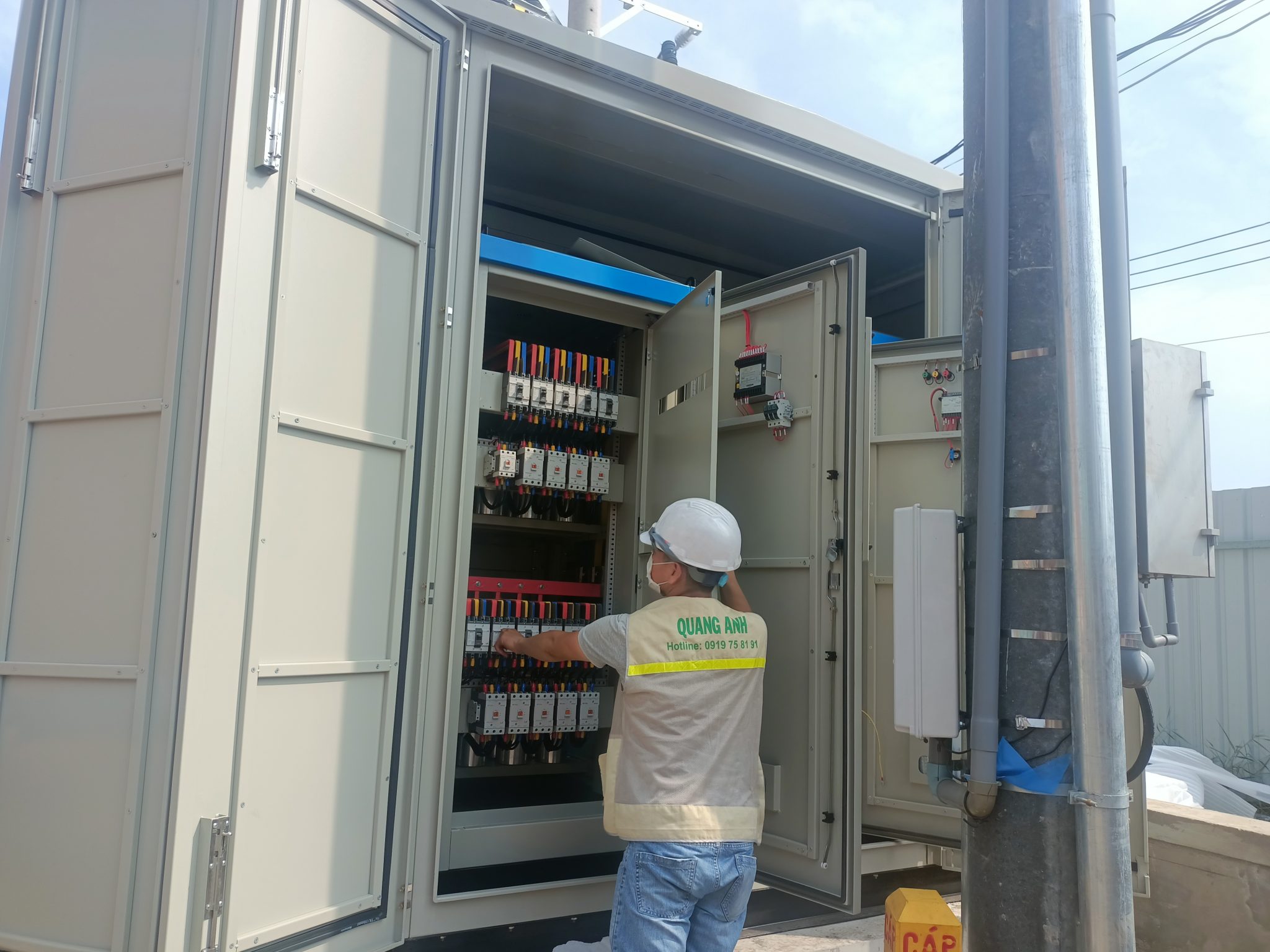
Case Study: Rooftop Solar Power System at a Factory
A factory in the Southern Industrial Park invested in a 1MWp rooftop solar power system, connecting to a 22kV medium-voltage grid. The process includes preparing a connection dossier with EVN, installing PV systems, inverters, then conducting equipment testing and acceptance before official operation.
Introduction to Rooftop Solar Power Systems
Factory rooftop solar systems are an optimal solution for businesses to reduce electricity costs and protect the environment. By installing solar panels on the workshop roof, factories can self-produce electricity serving production and lighting activities. Surplus electricity not used can be integrated into the grid and sold back, contributing to additional income.
Deployment Process of Rooftop Solar Power Systems
The deployment process begins with an on-site survey at the factory for measuring the roof area, assessing sun direction and shading, checking the existing electrical system, and determining power usage needs. Then, the factory receives design consultancy for a suitable system with consumption power and roof structure. The next phase involves signing a construction contract, preparing, and completing legal procedures such as registering grid connection with local electricity.
- Experts conduct thorough surveys to ensure maximum system efficiency.
- Implement PV system integration and install inverter technology to convert current compatible with the grid.
- Conduct inspection, acceptance, and grid connection process connection to the national grid.
Operating Principles and System Efficiency
Rooftop solar power systems operate based on panels that capture sunlight and convert solar energy into direct current (DC). This current is transformed into alternating current (AC) by the inverter technology, suitable for electrical devices used in factories. When output exceeds usage, businesses can sell excess electricity to the power company, increasing income.
In terms of efficiency, besides saving on electricity costs, the system also helps reduce the roof and below space temperature, thus reducing cooling costs. With rooftop solar systems, a factory can significantly cut CO2 emissions, supporting sustainable development strategies. Real-world reports show that a system with 250 panels and 3 inverters can generate about 365 kWh/day, providing well for various production activities in the factory.
Investment Costs and Payback Period
With the initial investment cost for a 1 MW-sized system currently at about 12 billion VND, this cost has almost halved compared to 5 years ago. The payback period is estimated at 3-4 years thanks to cost savings on electricity and income from surplus electricity sales, enabling businesses to conveniently use energy savings as a long-term free power source.
Thus, pioneering in rooftop solar system installation helps businesses not only save costs but also enhance competitiveness by adopting green technology, contributing to environmental protection and sustainable development.
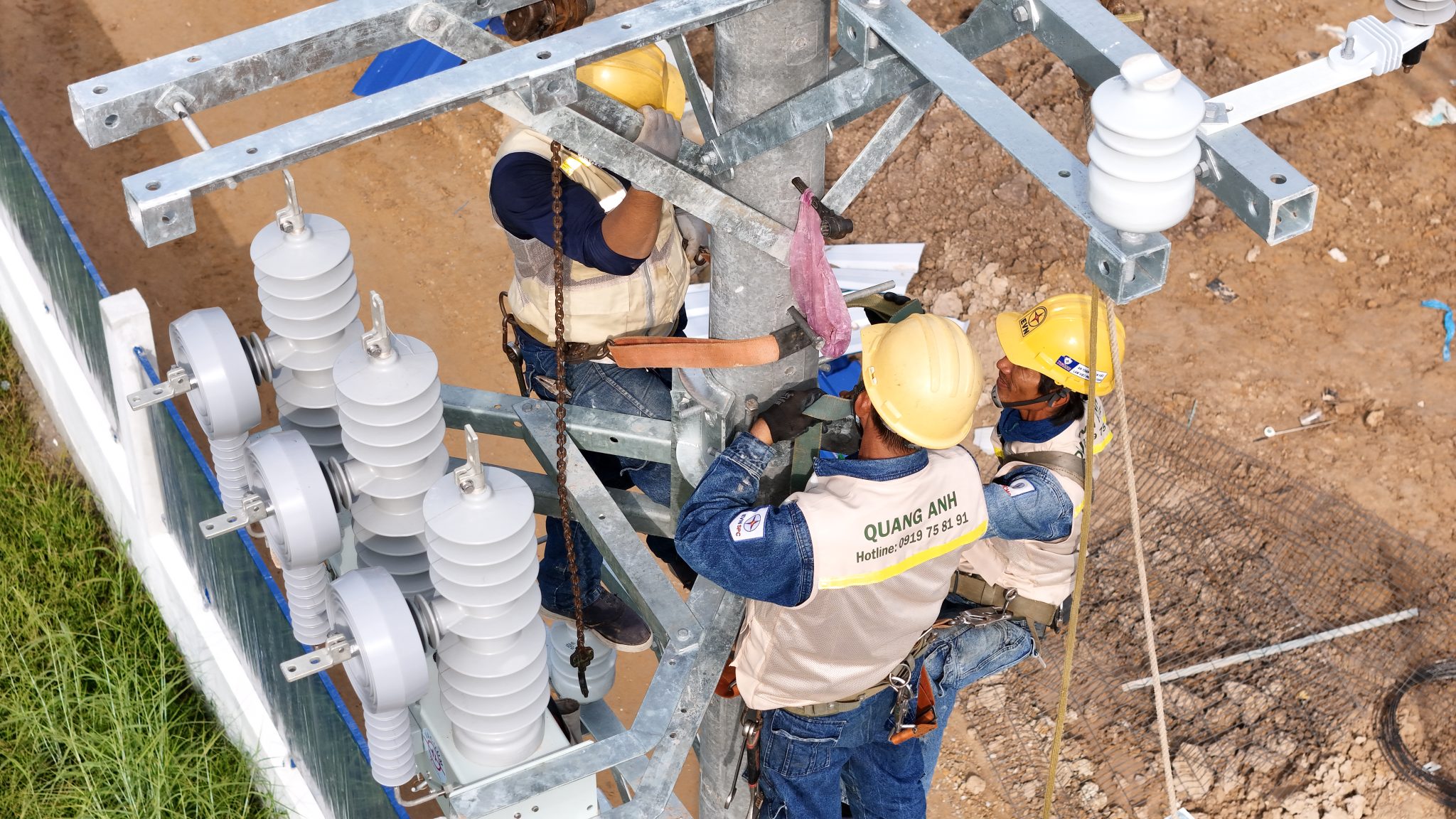
The medium voltage electrical system and substations play an important role in production activities, ensuring electricity efficiency and safety. Investing in solar power systems offers long-term strategic benefits, helping reduce costs and creating sustainability for businesses.
Contact QuangAnhcons via hotline +84 9 1975 8191 for consultations on efficient electrical system repair and maintenance in Long An.
QuangAnhcons provides transformer repair services in Long An, ensuring safe and stable medium voltage electrical systems, alongside consultation support on solar power solutions for factories and industrial parks.

 Tiếng Việt
Tiếng Việt 简体中文
简体中文 Deutsch
Deutsch 日本語
日本語 한국어
한국어 ไทย
ไทย Русский
Русский Français
Français
